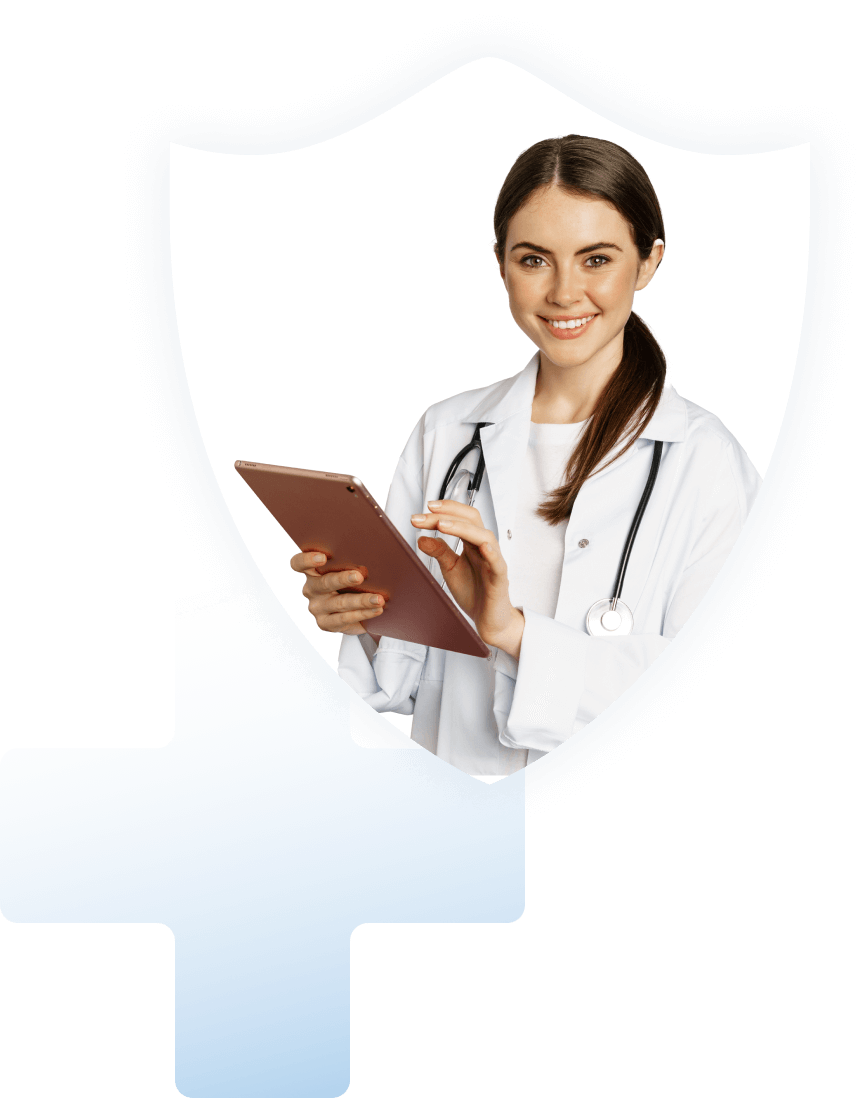Preferred Location: 110 Seventh St W Park Rapids,MN 56470 Park Rapids Change location
Preferred Location: 110 Seventh St W Park Rapids,MN 56470 Park Rapids Change location
SaferSTD Preferred Location: 110 Seventh St W Park Rapids,MN 56470 Park Rapids Change Location

Minnesota is known for its beautiful lakes, exciting hockey games, and the gorgeous twin cities. Whether you’re catching a Twins game or visiting the Mall of America, there’s never a shortage of things to do in MN. The state is also seeing an increase in Chlamydia, Gonorrhea, Hepatitis B, C, Herpes, Syphilis and HIV rates. This means before you decide on your next outing, it is important that you stop by one of the state’s many STD Clinics to get yourself tested. Even though there are free STD testing centers many people are still putting off this important checkup. If you are looking for an easier way to take care of your sexual health, you can now schedule private STD testing with one phone call. This way you only have to spend 15 to 20 minutes at a nearby lab, and you’ll still have plenty of time to start visiting some of the state’s 10,000 lakes.

The Centers for Disease Control and Prevention1 (CDC) recommends screening for the most common STDs, including chlamydia, gonorrhea, hepatitis B, hepatitis C, syphilis, herpes 1, herpes 2, and HIV for both men and women. In addition, the CDC suggests women get screened for trichomoniasis.
SaferSTD recommends searching for locations that offer a 10-test panel which tests for the most common bacteria and viral STDs in the U.S. with additional premium add-ons like early HIV detection, if needed.
The CDC2 provides detailed STD testing information as to when you should get tested. In summary, you should get tested today if you are sexually active, never been tested before, have had unprotected sex in the past, or if you exhibit symptoms.
According to the World Health Organization3, the majority of STI cases reported every day, more than one million, are asymptomatic; another reason to get tested today.
You should get tested again in 90 days to rule out STDs that have specific exposure waiting times, including HIV.
STD testing can be a quick and simple process, depending on the type of test you choose and where you get tested. Some may require an oral or genital swab, a urine test or blood sample, or a physical exam to check your genital area for signs of an STD.
SaferSTD has identified preferred providers that require only a urine test, a blood sample, or both without a physical exam.
The speed at which you receive your STD testing results depends on where you get tested. Before you choose your location, find out how long testing results will take.
At-home STD testing results are usually 3-5 business days, depending on the manufacturer of your test. You also need to take into account the amount of time it takes to receive the test or pick one up, perform the test, and ship it back, before the lab can analyze your results and report back to you.
If you test at a public facility such as a neighborhood clinic, you may have to wait a week, if not more for the results, which could delay treatment. If you test through a private facility, they have the fastest turnaround within 1-3 business days.
SaferSTD has researched and identified the most accredited and most reputable testing locations. Click here to find a preferred location near you.
Some STD testing clinics offer same-day walk-in options without an appointment. Below are nearby preferred locations that offer this option.
The cost of STD testing depends on whether you select private, public, or at-home testing, as well as the type of test(s) you need.
Several at-home STD options and public testing locations can cost up to $250, with most on the higher end, depending on the brand and type of testing. Public testing fees also vary based on income and welfare eligibility.
With private testing, you may save money on a low-cost comprehensive 10-test panel that tests for the most common bacterial and viral STDs in the United States.
SaferSTD has researched and identified reputable locations that offer upfront pricing without hidden fees. Click here to find a preferred location near you.

Accredited and Certified
These location types are best for: Privacy and convenience
Description: Order online and receive a doctor's order to visit this lab to get tested in as little as 15 mins. Get your results privately within 1-2 business days and speak with a doctor over the phone if your test results come back positive. Doctors may prescribe treatment or refer you to a specialist if needed.
Accredited and Certified
These location types are best for: Privacy and convenience
Description: Getting an STD test at a clinic near you has never been easier. When you choose this location, you can get a doctor's requisition to get tested in as little as 15 minutes. Following your test, you receive your results privately within 2 business days, and can speak to a doctor over the phone with confidence, should results come back as positive.
Accredited and Certified
These location types are best for: Privacy and convenience
Description: Why go to a public clinic? Get convenient and fast STD testing that is 100% confidential. Individual tests under $50. Order online and visit this lab the same day for a quick 15 min test. Get your results online within 1-2 business days, and view them privately. Doctor consultation available over the phone, should results come back as positive.
Accredited and Certified
These location types are best for: Privacy and convenience
Description: Get Fast, Easy and Affordable testing at this location. Results come back within 2 business days and be in and out of the lab in less then 20 minutes.
Show only locations where privacy and discretion is taken into importance.
Description: Public Health Department/Social Services Department.
Description: Community Based Organization. Clinic Availability Monday-Thursday
Description: Urgent Care hours: Mon.-Fri., 8am-7:30pm; Sat., Sun., 9am-4pm
Show only locations where you can easily book your test online.
Description: Community Based Organization.
Show only locations where they offer the HIV RNA Early Detection Test for people who think they may have been recently exposed to the HIV virus
Description: Public Health Department/Social Services Department.
There are several alarming trends when you look at the state’s STD data. While some of the yearly totals are below national averages, cases of chlamydia, gonorrhea, and syphilis each year. The data shows that these rates have been increasing over the past years, hitting their peak recently in 2015. If you are sexually active and you live in the area, it is important that you ensure your health as well as the health of your sexual partners.
There’s only a couple ways to combat these rates rising to levels that are out of control. Education about safe sex practices can go a long way, but testing is a necessary component of keeping any community disease free. Without adequate testing, it’s impossible to control potential outbreaks of sexually transmitted diseases. If more people become aware of their own STD status, it can create a culture of responsibility that will greatly benefit the sexual health of residents in the area.
Additionally, chlamydia rates are up across multiple demographics. While overall numbers are rising is always bad, it’s even worse when those numbers are rising among both male and female demographics. Residents must share the burden of increasing their testing efforts.
Perhaps the most troubling piece of data is that chlamydia rates are skyrocketing in the 20-24 age group. Minnesota’s young adults need to be increasingly aware of the risk of infection in their state. These numbers are also very high when compared to other state averages. The number of infections per 100,000 residents is jarring when compared to other states.
Chlamydia represents around 80 percent of all STD cases each year, so it’s important to break down the data for this disease specifically. When the data is analyzed, it is apparent that young women between the ages of 15-24 are most at risk. The only way to help young adults learn about safe sex is through education and testing.
The other area of concern is the upward trajectories of the reported STDs. Residents have made a concerted effort to increase sexual awareness and education. Public schools have increased the rigor with which they teach sexual health. As recently as 2012, the state had no concrete guidelines for sexual education. There were no requirements on what should and should not be taught. Efforts have improved, but poor education is a large contributor to the state’s chlamydia problem.
Without comprehensive sex education classes, most students do not understand the importance of regular testing. They also don’t know that the simple procedure is one of the most effective ways to stop the spread of STDs. Regular Herpes testing in Minnesota can help protect high school students from the transmittable disease, and lower infection rates. Regular HIV testing in Minnesota is also critical, especially now that incident rates are rising.
Analyzing demographics enables state health professionals to see where they need to target their awareness efforts. Minnesota is home to several dense city centers and college populations are strong across the state. With large centers of young people living together, it’s a perfect recipe for an outbreak without proper testing and education.
Considering chlamydia is the primary issue facing residents, the demographic data for that disease is considered especially significant. African American communities are 9 times more likely to deal with chlamydia than other communities in the state. Native Americans are also 4 times as likely to have the disease.
Much of the disparity across racial lines is due to poverty and lack of access to education. Due to the state’s struggles with implementing sexual education, it’s no surprise that lower income students feel this burden the most.
Without access to affordable treatment or sexual health education, it’s difficult for communities to keep themselves safe and healthy. As education efforts increase, clinicians hope to assist at-risk communities in controlling the spread of STDs. The more people in these communities know about the resources that are available, the less STDs will spread. If you know a member of one of these at-risk communities, consider showing them the free clinics in their area.
The rising STD rates across the state means that everyone is potentially at risk, regardless of sexual activity. It is understandable if you want to avoid the long lines at the community STI clinics, and now you don’t have to spend the day in a crowded waiting room. With one phone call, you can easily schedule confidential STD testing. Since it only takes a few minutes at a local lab, you still have plenty of time left to catch the daily sales at the fabulous Mall of America.






